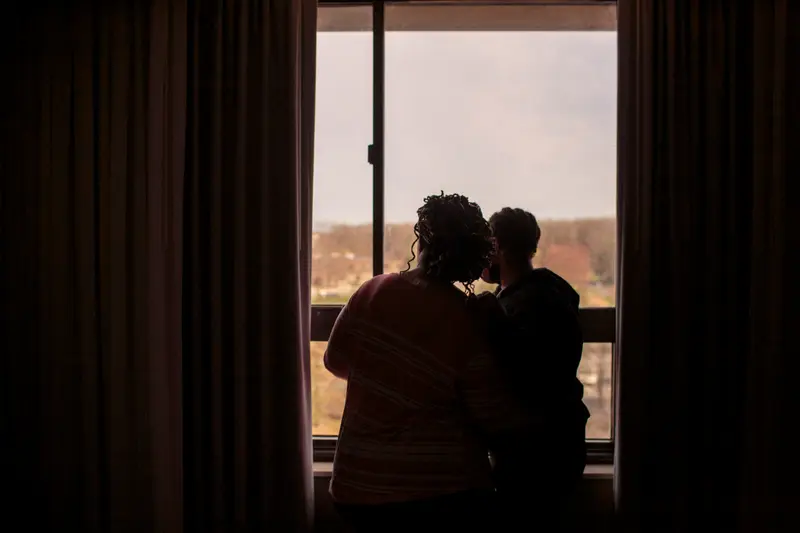This article was produced for ProPublica’s Local Reporting Network in partnership with THE CITY. Sign up for Dispatches to get stories like this one as soon as they are published.
In November, we published a story about three New York City teenagers who struggled to get mental health services that the city’s public schools are legally obligated to provide. We identified one of those teenagers by her full name and the second by his first name only. For the third teenager, we agreed to use just his middle name and — unlike the other two — to refrain from naming a parent at all.
We followed families’ stated preferences for their children’s privacy. But in doing so, we wrestled with difficult questions about how to best serve readers and the kids we were writing about.
The standard in journalism is to identify sources by their full names whenever possible. Readers deserve to know who’s talking, particularly when a source is accusing a person or a public system of wrongdoing. And it’s part of our job, as reporters, to demonstrate why we deserve a reader’s trust. Especially in investigations, credibility is the most important currency we have, and we try to earn it by being as transparent about our reporting as we possibly can.
In writing about kids with mental health challenges, however, things get complicated. Over the year that I’ve been working on this series about access to mental health care for kids in New York, I’ve found myself writing about some of the most intimate, painful moments in the lives of people who aren’t old enough to give informed consent.
In many cases, I’ve been able to speak directly to the kids I’m writing about, on or off the record. In other cases, that wasn’t possible — either because the kids were in crisis, or away in a residential program, or just because they were so tired of the whole subject that they had no interest in rehashing it with me. Young people in the mental health system are often required to discuss their worst memories — or the worst things they’ve ever done — with what can seem like an endless succession of intake specialists, new therapists, school principals, deans, probation officers and so on. There’s a limit to how many times anyone wants to tell the story of how they attempted suicide or the time they attacked their mother.
Reporting for my most recent article posed an additional ethical dilemma: The family asking for the highest level of anonymity — that of the teenager we identified by just his middle name — was also the family with the greatest financial resources, a fact that was crucial to the story. In granting their request, were we contributing to the idea that the kid with the most money was the most deserving of privacy or that he had more to lose? Were we implying that a wealthy family should be more ashamed of mental illness than a poor one?
In the end, we stuck with the policy we’ve used from the beginning of the project — which is that we allow parents and guardians to decide how identifiable or anonymous their children will be.
Parents’ decisions have often been fraught with worry: How will their kids feel seeing personal information published online? Will their family be publicly defined by what we write? Will the story pop up in a Google search if a future college admissions counselor or employer looks up their child’s name? Will their in-laws see it?
Some parents also worry about retaliation. The universe of care for children with very serious mental health challenges is small, and the sickest kids are often in the physical custody of outside caregivers. What if families need to put their children back in a hospital or school that they’ve publicly criticized?
There was one thing, though, that every child and parent I’ve spoken to has said about why they decided to talk to me: They all wanted to make the system better. Kids in mental health crises face a nearly universal set of problems, including underfunded programs, waitlists for services, constant staff turnover and inadequate care. And yet those problems are all but invisible to the outside world. Without exception, the kids and parents who appeared in these stories decided that they were willing to compromise their privacy in the hope that some other family wouldn’t have to endure what theirs did.
“I’m just hoping that someone will take this on — some legislator, some oversight committee, someone will really take this on,” said Tamara Begel, a Long Island parent who spent many hours this year helping me to understand her yearslong fight to get mental health care for her son. “When politicians just hear the numbers, ‘Oh it’s hundreds or thousands of kids sitting in waiting rooms or psych ERs, waiting for beds,’ it’s too easy to say ‘aww’ and move on. I want them to see that it’s real.”
When I first wrote about Begel’s family, she chose to identify herself and her son by their middle names. Shortly after the story was published, however, New York’s attorney general, Letitia James, held a hearing about the lack of access to mental health care across the state, and Begel decided to testify publicly. Since then, she’s become more outspoken in her advocacy for Long Island kids and families.
But the choice to be public with her name and story remains difficult, Begel told me recently. “I’m still not 100% comfortable. I still wake up at night wondering if I did the right thing, or if it will have a negative effect on my child. Only time will tell.”






